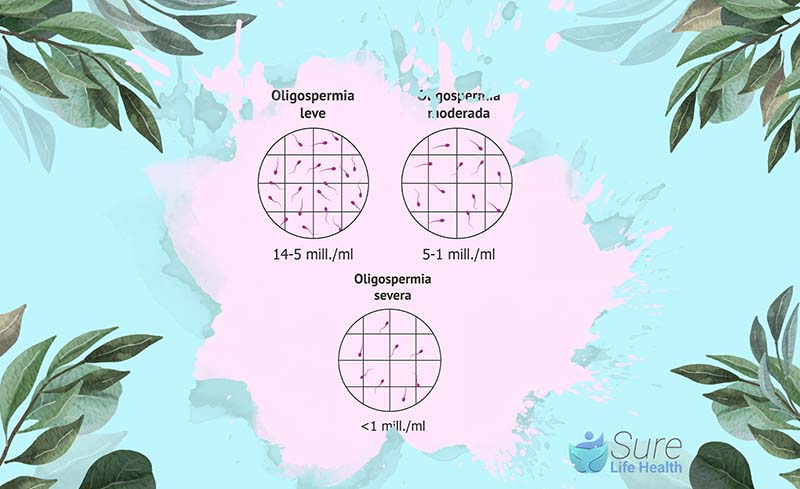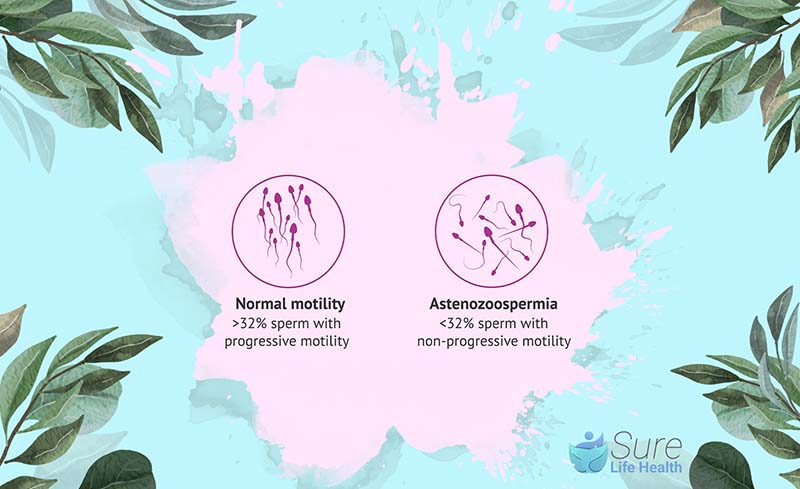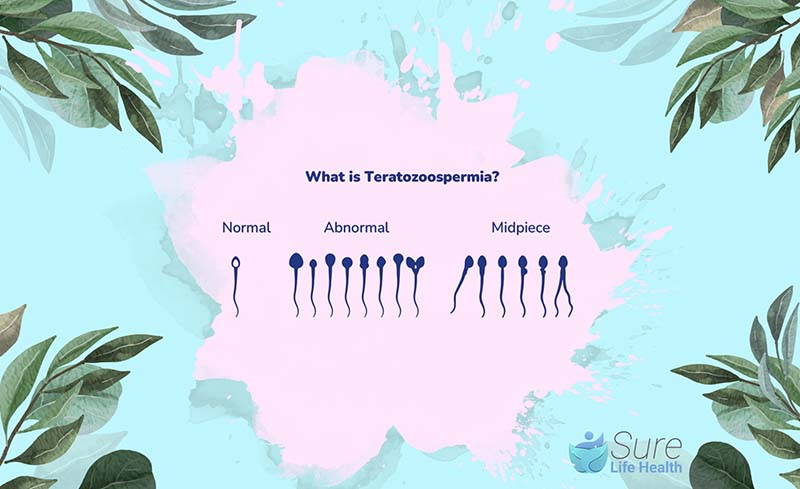When couples aim to conceive, understanding “What Does Unhealthy Sperm Look Like?” is as crucial as knowing about egg quality. Sperm health, including count, motility, and shape, significantly influences conception and pregnancy sustainability.
Damaged DNA in sperm, highlighted by research from Tommy’s charity, can greatly increase miscarriage risks. Recognizing and addressing the signs of unhealthy sperm is a key step towards enhancing fertility and achieving a successful pregnancy.
Common Types of Abnormal Sperm
Oligozoospermia: This condition refers to a low sperm count, typically defined as having fewer than 15 million sperm per milliliter of semen.

Asthenozoospermia: Here, the issue lies with sperm motility, which is the ability of sperm to move properly. Asthenozoospermia occurs when less than 40% of the sperm demonstrate normal motility.

Teratozoospermia: This term describes sperm with abnormal morphology, meaning they have unusual shapes or structures. Teratozoospermia is diagnosed when the percentage of normal-shaped sperm is less than 4%.

What Does Unhealthy Sperm Look Like? Signs That Sperm Are Not Healthy
When assessing sperm health, three main factors come into play: sperm count, motility, and morphology.
Sperm Count: A low sperm count can make it difficult to impregnate your partner. Typically, a sperm count is considered low if it falls below 15 million sperm cells per milliliter of semen.
Motility: Healthy sperm should be able to move effectively to reach a woman’s cervix, uterus, and fallopian tubes for fertilization. At least 40% of your sperm should demonstrate this motility. If fewer than 40% are motile, it indicates low sperm motility.
Morphology: Abnormalities in sperm morphology can manifest in various ways, such as enlarged heads, irregular head or mid-piece shapes, crooked or curved tails, double tails, or double heads. Normal sperm typically exhibit oval-shaped heads and long tails.
What Can Affect the Health and Quality of Sperm?
Several factors can influence the health and quality of your sperm:
Age: Sperm count and motility tend to decrease after the age of 50.
Smoking: Smoking adversely affects sperm health by reducing sperm count, motility, and morphology, as well as the volume of ejaculate.

Weight: Being obese or overweight can lower sperm count. Moreover, obesity may cause changes in sperm genes, potentially affecting the health of future generations through epigenetic effects.
Alcohol: Heavy alcohol consumption can impair sperm quality and may contribute to erectile dysfunction.

STDs: Sexually transmitted diseases like genital warts, syphilis, and gonorrhea can negatively impact the reproductive system and sperm health.
Medication: Certain medications and recreational substances can interfere with sperm quality and production.
Environment: Exposure to toxins in the environment, such as chemicals, pesticides, or radiation, can decrease sperm count and quality while increasing DNA fragmentation.
Temperature: Maintaining the optimal temperature for testicular health is crucial for sperm quality. Avoiding hot baths, saunas, or prolonged exposure to high temperatures can help preserve sperm quality.
Note: Being mindful of these factors and adopting healthy lifestyle choices can contribute to better sperm health and overall reproductive well-being. If you have concerns about sperm health, consulting a healthcare professional is advisable for personalized guidance and support.
Can I Check My Sperm Count at Home?
Yes, you can assess the health of your sperm at home using various at-home testing kits available on the market. These kits offer insights into sperm concentration, motility, and count, key factors in male fertility assessment.
For instance, the YO sperm kit measures sperm concentration and motility, while the SpermCheck kit specifically measures sperm count. However, it’s important to note that these tests do not evaluate other critical factors such as ejaculate volume or sperm morphology, which also play significant roles in assessing male fertility.
While at-home sperm tests can provide valuable information, they should not replace a comprehensive evaluation by a healthcare provider. If you have concerns about your fertility or your partner’s fertility, it’s advisable to seek guidance from a healthcare professional for further assessment and appropriate advice.
Note: At-home sperm testing kits offer convenience and some insights into sperm health, but they may not provide a complete picture. Consulting a healthcare provider ensures a thorough evaluation and personalized recommendations for optimizing fertility.
Yellowish Sperm Is Good or Bad?
Yellowish sperm can raise concerns as it might indicate underlying medical issues. While occasional yellow semen may not be alarming and could result from dietary factors or lifestyle changes, persistent yellowish sperm warrants attention, particularly if accompanied by symptoms like pain, itching, or fever.
Consistently yellow semen, especially when other symptoms are present, could suggest infections such as sexually transmitted diseases (STIs), prostate abnormalities, or liver problems. Consulting a doctor is advisable if you’re worried about the color of your semen, particularly if it remains consistently yellow or if you experience additional symptoms.
How to Improve Sperm Quality
Several lifestyle changes and habits can help improve sperm quality and promote overall reproductive health:
Maintain a healthy weight: Research suggests that maintaining a healthy BMI (Body Mass Index) is crucial for producing healthy sperm.
Exercise: Regular exercise has been linked to better sperm quality. However, avoid excessive exercise as it can lower testosterone levels.
Healthy diet: Incorporate foods rich in Omega-3 fatty acids like fish, seeds, and walnuts, as well as zinc-rich foods such as nuts, lobster, beans, turkey, and mussels. Avoid processed meats, soy products, high-fat dairy, and trans fats. Zinc can enhance sperm vitality, while adequate levels of certain vitamins like folic acid and Vitamin B complex may increase fertility.
Quit Smoking: Heavy smoking can lead to low sperm count and DNA damage in sperm.
Manage stress: Stress can negatively impact hormone levels crucial for sperm production. Manage stress through healthy eating, regular exercise, sufficient sleep, and seeking support if needed.
Adequate sleep: Getting 8 hours of uninterrupted sleep is essential for overall health, including reproductive health. Inadequate sleep can affect reproductive potential.

Conclusion
In wrapping up the discussion on “What Does Unhealthy Sperm Look Like?”, it’s clear that recognizing the signs of unhealthy sperm is crucial for men striving to improve their reproductive health.
By understanding the impact of lifestyle choices on sperm quality, such as diet, exercise, and habits like smoking, men can take actionable steps toward better fertility. Utilizing at-home testing kits can serve as a preliminary check, but consulting healthcare professionals for a comprehensive evaluation is essential.
Be sure to explore more insightful blogs from Sure Life Health, where we continue to shed light on the latest trends and breakthroughs in health and wellness.
Professor Gaye Cunnane, PhD, MB, FRCPI
As the Director of Health and Wellbeing at RCPI, Professor Gaye Cunnane is at the helm of initiatives aimed at enhancing the health and well-being of RCPI Trainers and Trainees. Her role extends beyond administration; she is also a respected clinical professor of rheumatology and a consultant rheumatologist at Trinity College Dublin (TCD) and St James’s Hospital. Prof. Cunnane’s medical journey began at TCD, where she graduated from medical school, and her path has been marked by both clinical and academic excellence.
After completing her basic clinical training in medicine, she embarked on PhD studies at University College Dublin and St Vincent’s University Hospital. Her research during this period was focused on prognostic markers in early inflammatory arthritis, a project that saw her collaborating with esteemed universities across Europe, including in Switzerland, The Netherlands, the UK, and Sweden.
Prof. Cunnane’s career took her to the University of California, San Francisco, where she spent three years delving into research on new treatments for lupus. Her academic prowess led her to the University of Leeds in 2001 as a senior lecturer, before returning to Ireland in 2003 to assume her current roles. She has also served as the National Specialty Director for Rheumatology training in Ireland, Programme Director for Basic Specialist Training with RCPI, and as a past President of the Irish Society for Rheumatology.
PUBLISHED ARTICLES
“Rheumatic disease differentiation using immunoglobulin G sugar printing by high-density electrophoresis”: Published in The Journal of Rheumatology, this study reflects her in-depth investigation into rheumatic diseases.
“Benefits of exercise in patients with rheumatoid arthritis: a randomized controlled trial”: This research work, highlighting the positive impact of exercise on rheumatoid arthritis, underscores Prof. Cunnane’s dedication to practical, patient-centered research.
Additionally, Prof. Cunnane has made notable contributions to the Annals of the Rheumatic Diseases, discussing early referral, diagnosis, and treatment of rheumatoid arthritis. She has also been involved in a study on the NCBI platform investigating exercise benefits in rheumatoid arthritis patients.
Professor Gaye Cunnane’s career is a testament to her commitment to improving patient outcomes in rheumatology through rigorous research, clinical excellence, and dedicated teaching. Her work continues to influence the field of rheumatology, both in Ireland and internationally.

